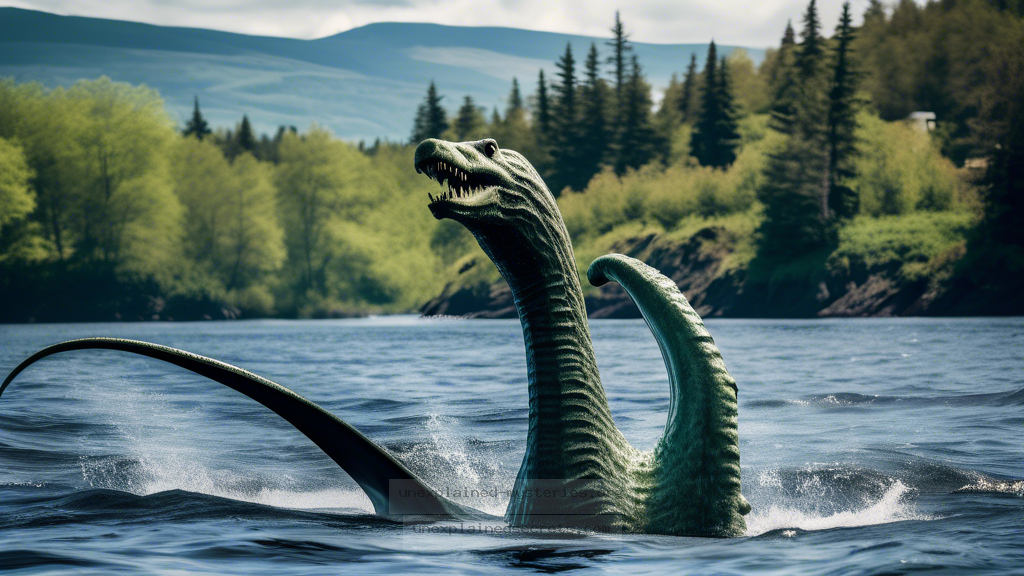What Can Modern Sonar Technology Reveal About the Loch Ness Monster?
What Can Modern Sonar Technology Reveal About the Loch Ness Monster?
The legend of the Loch Ness Monster, affectionately known as “Nessie,” has captivated the imaginations of countless individuals for generations. This enigmatic creature, reportedly lurking in the depths of Scotland’s Loch Ness, has sparked a multitude of theories, from cryptozoological speculation to scientific investigation. Among the tools employed in the quest for evidence of Nessie’s existence, modern sonar technology stands out as a particularly compelling means of exploration. But what can this advanced technology truly reveal about the Loch Ness Monster, and how does it contribute to our understanding of this enduring mystery?
Historical Context of Loch Ness Monster Sightings
The legend of the Loch Ness Monster dates back to ancient times, with the first recorded sighting occurring in 565 AD, described in the biography of St. Columba. According to the account, St. Columba encountered a “water beast” that attacked a local man, prompting him to intervene and banish the creature. Throughout the centuries, numerous sightings have been reported, with varying descriptions of the beast, ranging from a long neck and humps to a more serpentine form. The modern era of Nessie sightings surged after the famous “Surgeon’s Photographs” surfaced in 1934, claiming to capture the creature. Despite being revealed as a hoax decades later, the image fueled public interest and set the stage for ongoing investigations into the Loch Ness phenomenon.
Understanding Sonar Technology
Sonar, short for Sound Navigation and Ranging, is a technique that uses sound propagation to navigate, communicate, or detect objects underwater. In the case of searching for Nessie, sonar technology can help map the loch’s depths, identify submerged objects, and potentially locate the fabled creature itself. There are two primary types of sonar: active and passive. Active sonar emits sound waves and listens for echoes, while passive sonar detects sound waves emitted by objects in the water. Both methods have been utilized in various Loch Ness expeditions, each offering unique insights into the underwater environment.
Notable Sonar Expeditions at Loch Ness
Several notable expeditions have employed sonar technology in their quest to uncover the truth about Nessie. One of the most famous was the 1987 “Operation Deepscan,” which involved a fleet of boats equipped with sonar devices scanning the loch for 24 hours straight. This ambitious project covered a substantial portion of the lake and revealed numerous underwater anomalies, some of which were attributed to large objects or marine life. Although no definitive proof of Nessie was found, the expedition marked a turning point in the use of technology for cryptozoological research.
| Year | Expedition Name | Key Findings |
|---|---|---|
| 1987 | Operation Deepscan | Numerous underwater anomalies, no definitive evidence of Nessie |
| 2003 | Loch Ness Project | Identified large sonar returns, hypothesized as large fish |
| 2018 | Loch Ness Exploration | Advanced sonar mapping, numerous unexplained objects |
Core Concepts of Sonar Discoveries
Sonar technology has provided a wealth of information about the underwater landscape of Loch Ness. The loch is approximately 23 miles long and over 750 feet deep, making it an intriguing environment for exploration. Sonar mapping has revealed underwater features such as trenches and ledges that could potentially serve as hiding spots for large creatures. However, the technology often detects large objects, including debris and schools of fish, which complicates the search for Nessie. The challenge remains to differentiate between ordinary aquatic life and a legendary creature.
Scientific Implications of Sonar Findings
The scientific implications of sonar findings are profound. While the sonar data collected thus far has not provided definitive evidence of Nessie’s existence, it has contributed to a better understanding of the loch’s biodiversity. Some researchers argue that the presence of large sonar returns could indicate large fish species, such as catfish or sturgeon, which have been known to grow to considerable sizes. This perspective suggests that some Nessie sightings may be misidentified aquatic animals rather than a mythical creature.
Alternative Perspectives on the Loch Ness Mystery
Despite the lack of concrete evidence, alternative perspectives on the Loch Ness Monster continue to thrive. Some enthusiasts assert that Nessie is a surviving plesiosaur, a prehistoric marine reptile. Others believe the creature could be a product of local folklore, a manifestation of collective imagination fueled by the natural beauty of Loch Ness. These viewpoints emphasize that the legend of Nessie may not solely hinge on the existence of an actual creature, but rather on the cultural and psychological factors surrounding the mystery.
Common Misconceptions and Clarifications
One of the most common misconceptions about sonar technology in relation to the Loch Ness Monster is the belief that sonar can definitively prove or disprove the creature’s existence. In reality, sonar is a tool for gathering data about the underwater environment, but it cannot provide absolute answers. Additionally, the interpretation of sonar data can vary widely, leading to differing conclusions among researchers. It is essential to approach sonar findings with a critical eye and a recognition of the limitations of the technology.
Best Practices for Investigating Loch Ness
For those interested in investigating the Loch Ness Monster, adopting best practices can enhance the quality of research. First and foremost, utilizing a multidisciplinary approach that incorporates sonar technology, environmental science, and folklore studies can provide a well-rounded perspective. Collaborating with local experts and historians can also enrich the investigative process. Furthermore, maintaining open-mindedness while remaining skeptical is crucial; this balance allows researchers to explore possibilities without jumping to conclusions.
Future Developments in Loch Ness Research
As technology continues to evolve, future developments in Loch Ness research may yield exciting advancements. The advent of more sophisticated sonar systems, such as multi-beam sonar, offers improved resolution and the ability to create detailed three-dimensional maps of underwater landscapes. In addition, the integration of artificial intelligence and machine learning could enhance data analysis, potentially uncovering patterns or anomalies previously overlooked. Ongoing public interest in the Loch Ness Monster also promises continued funding and support for research initiatives.
Conclusion: The Ongoing Mystery of Loch Ness
The Loch Ness Monster remains one of the most intriguing mysteries of our time, and modern sonar technology has played a pivotal role in advancing our understanding of this phenomenon. While no definitive evidence of Nessie’s existence has emerged, the data collected has provided valuable insights into the underwater environment of Loch Ness and the diverse aquatic life it harbors. As researchers continue to explore the loch and harness new technologies, the mystery of Nessie will undoubtedly endure, sparking curiosity and debate for generations to come. Whether as a subject of scientific inquiry or folklore, the Loch Ness Monster will continue to capture the human imagination.
Other Articles
Recent Posts
- What Happened to Flight MH370? The Conspiracy Theories That Still Haunt Us
- What Secrets Lurk Within the Walls of the Infamous Trans-Allegheny Lunatic Asylum?
- What Evidence Supports the Existence of Bigfoot in the Pacific Northwest?
- What Happened to the Indus Valley Civilization? Unraveling the Mysteries of Ancient Urban Life
- Can Telepathy Be Scientifically Proven Through Laboratory Evidence?







